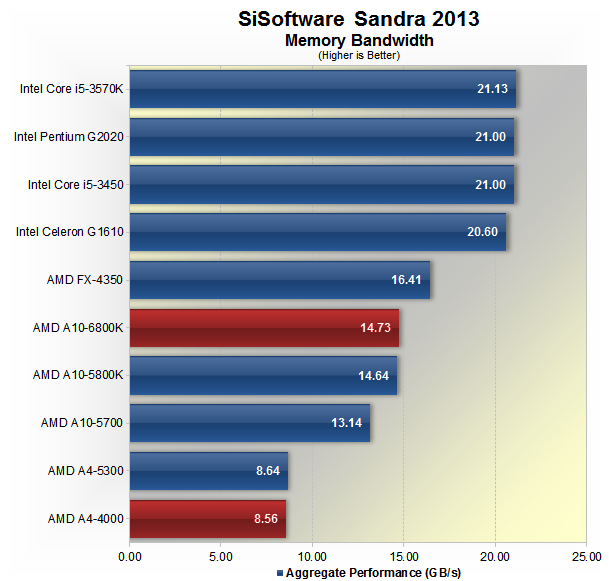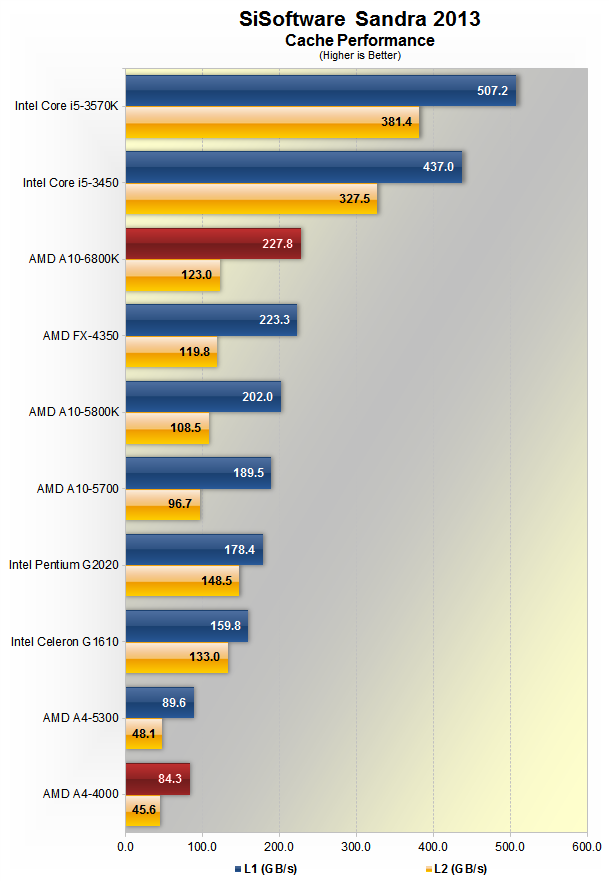System Specs & Memory Bandwidth
|
AMD Trinity System Specs
|
AMD Vishera System Specs
|
|
Intel Ivy Bridge System Specs
|

The AMD A10-6800K produced a memory bandwidth of 14.73GB/s and it was only a fraction faster than the older A10-5800K. Meanwhile, the A4-4000 was slightly slower than the A4-5300, though despite the 400MHz gap in frequency the bandwidth results were almost identical.

Cache performance of the AMD A10-6800K was quite strong; L1 hit 227.8GB/s and L2 reached 123GB/s. Once again the A10-6800K was slightly faster than the A10-5800K. Conversely, the A4-4000 was considerably slower with L1 bandwidth of 84.3GB/s and L2 bandwidth of 45.6GB/s, both figures slightly below the A4-5300.
